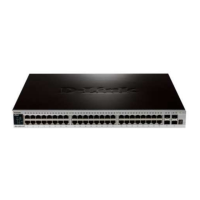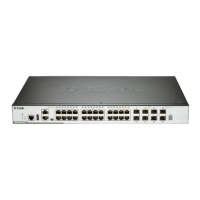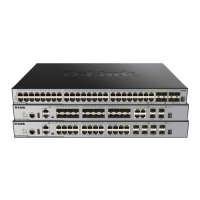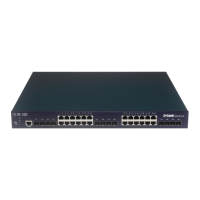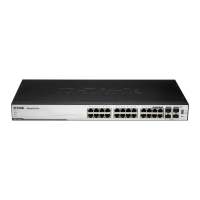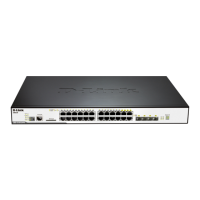xStack® DGS-3620 Series Managed Switch Web UI Reference Guide
73
PVID (1-4094)
This field is used to manually assign a PVID to a VLAN. The Switch's default is to
assign all ports to the default VLAN with a VID of 1.The PVID is used by the port to
tag internally outgoing, untagged packets, and to make filtering decisions about
GVRP
The GARP VLAN Registration Protocol (GVRP) enables the port to dynamically
become a member of a VLAN. GVRP is Disabled by default.
Ingress Checking
This drop-down menu allows the user to enable the port to compare the VID tag of
an incoming packet with the port’s VLAN setting, including PVID and tag LAN
settings. If enable ingress checking and the reception port is not the member port of
the frame’s VLAN, the frame shall be discarded.
Acceptable Frame Type
This field denotes the type of frame that will be accepted by the port. The user may
choose between Tagged Only, which means only VLAN tagged frames will be
accepted, and All, which mean both tagged and untagged frames will be accepted.
All is enabled by default.
Click the Apply button to accept the changes made.
MAC-based VLAN Settings
Users can create new MAC-based VLAN entries, search and delete existing entries. When a static MAC-based
VLAN entry is created for a user, the traffic from this user will be able to be serviced under the specified VLAN
regardless of the authentication function operating on this port.
To view the following window, click L2 Features > VLAN > MAC-based VLAN Settings, as show below:
Figure 4-13 MAC-based VLAN Settings
The fields that can be configured are described below:
Parameter Description
Enter the unicast MAC address.
Select this option and enter the VLAN ID.
Select this option and enter the VLAN name of a previously configured VLAN.
Use the drop-down menu to select the priority that is assigned to untagged packets.
Click the Find button to locate a specific entry based on the information entered.
Click the Add button to add a new entry based on the information entered.
Click the View All button to display all the existing entries.
Click the Delete All button to remove all the entries listed.
Click the Delete button to remove the specific entry.
Private VLAN Settings
A private VLAN is comprised of a primary VLAN, up to one isolated VLAN, and a number of community VLANs. A
private VLAN ID is presented by the VLAN ID of the primary VLAN. The command used to associate or de-
associate a secondary VLAN with a primary VLAN.
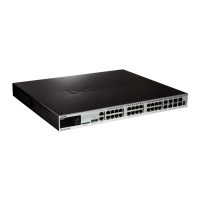
